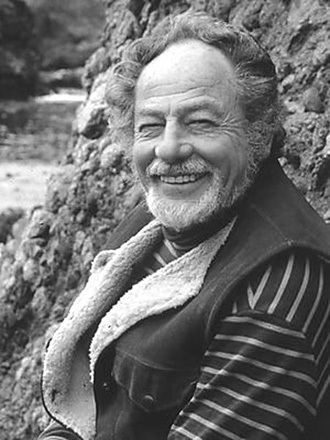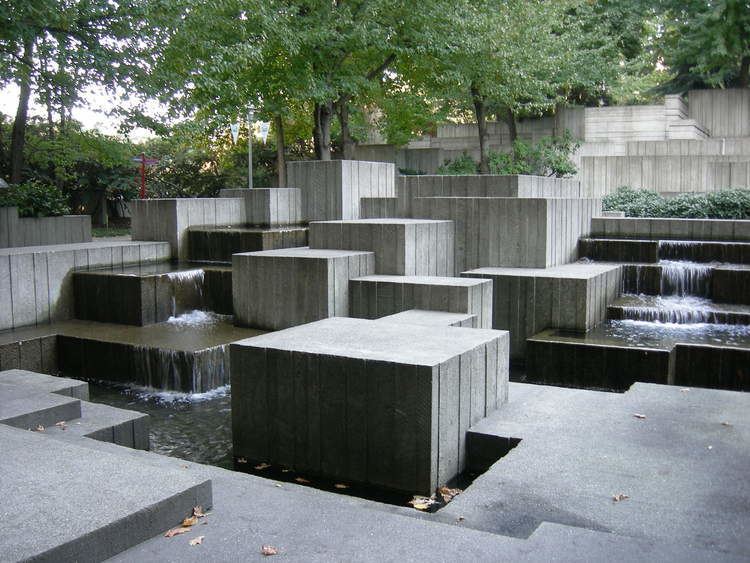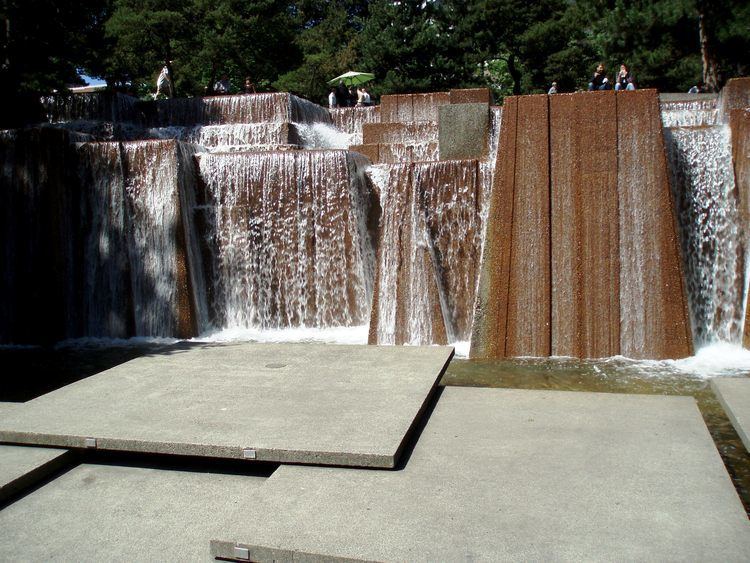Name Lawrence Halprin Role Landscape architect | Movies Breath Made Visible | |
 | ||
Died October 25, 2009, Kentfield, California, United States Children Daria Halprin, Rana Halprin Books The RSVP cycles, A Life Spent Changing, The Franklin Delano R, Taking Part: a Worksho, Notebooks - 1959‑1971 Similar People | ||
Lawrence halprin biography becoming a landscape architect 3 of 10
Lawrence Halprin (July 1, 1916 – October 25, 2009) was an American landscape architect, designer and teacher.
Contents
- Lawrence halprin biography becoming a landscape architect 3 of 10
- Lawrence halprin biography working for tommy church 6 of 10
- Early life
- Career
- Projects
- Awards
- Publications
- References

Beginning his career in the San Francisco Bay Area, California, in 1949, Halprin often collaborated with a local circle of modernist architects on relatively modest projects. These figures included William Wurster, Joseph Esherick, Vernon DeMars, Mario J. Ciampi, and others associated with UC Berkeley. Gradually accumulating a regional reputation in the northwest, Halprin first came to national attention with his work at the 1962 Seattle World's Fair, the Ghirardelli Square adaptive-reuse project in San Francisco, and the landmark pedestrian street / transit mall Nicollet Mall in Minneapolis. Halprin's career proved influential to an entire generation in his specific design solutions, his emphasis on user experience to develop those solutions, and his collaborative design process.

Halprin's point of view and practice are summarized in his definition of modernism:


In his best work, he construed landscape architecture as narrative.
Lawrence halprin biography working for tommy church 6 of 10
Early life
Halprin grew up in Brooklyn, New York; and as a schoolboy, he earned acclaim playing sandlot baseball. Being Jewish, he spent three of his teenage years in Israel on a kibbutz near what is today the Israeli port city of Haifa.
He earned a B.A. at Cornell University; and he was granted a M.A. at the University of Wisconsin. Then he earned a second bachelor's degree from the Harvard Graduate School of Design, where his professors included architects Walter Gropius and Marcel Breuer. His Harvard classmates included Philip Johnson and I.M. Pei. A visit to Taliesin, Frank Lloyd Wright’s studio in Wisconsin, had sparked Halprin’s initial interest in being a designer; and his formal training began in classes with Christopher Tunnard.
In 1944, Halprin was commissioned in the United States Navy as a Lieutenant (junior grade). He was assigned to the destroyer USS Morris in the Pacific which was struck by a kamikaze attack. After surviving the destruction of the Morris, Halprin was sent to San Francisco on leave. It was there he would stay following his discharge.
Career
After discharge from military service, he joined the firm of San Francisco landscape architect Thomas Dolliver Church. The projects he worked on in this period included the Dewey Donnell Garden (El Novillero) in Sonoma County.
Halprin opened his own office in 1949, becoming one of Church's professional heirs and competitors.
Halprin's wife, accomplished avant-garde dancer Anna Halprin, is a long-time collaborator, with whom he explored the common areas between choreography and the way users move through a public space. They are the parents of Daria Halprin, an American psychologist, author, dancer, and actress, and of Rana Halprin, a photographer and activist for Romani and human rights.
Halprin's work is marked by his attention to human scale, user experience, and the social impact of his designs, in the egalitarian tradition of Frederick Law Olmsted. Halprin was the creative force behind the interactive, 'playable' civic fountains most common in the 1970s, an amenity which continues to greatly contribute to the pedestrian social experience in Portland Oregon, where "Ira's Fountain" is loved and well-used, and the United Nations Plaza in San Francisco. The Heritage Park Plaza in Fort Worth, Texas, designed by Halprin and built in 1980, was listed on the National Register of Historic Places as its featured listing of the week, on May 21, 2010.
Recently many of Halprin's works have become the source of some controversy. Some have fallen victim to neglect, and are in states of disrepair. Critics argue his pieces have become dated and no longer reflect the direction their cities want to take. Budgetary constraints and the urge to "revitalize" threaten some of his projects. In response foundations have been set up to improve care for some of the sites and to try to preserve them in their original state.
He was the co-creator with his wife, the dancer Anna Halprin, of the "RSVP Cycles", a creative methodology that can be applied broadly across all disciplines.
Projects
Halprin's range of projects demonstrate his vision of the garden or open space as a stage. Halprin recognized that "the garden in your own immediate neighborhood, preferably at your own doorstep, is the most significant garden;" and as part of a seamless whole, he valued "wilderness areas where we can be truly alone with ourselves and where nature can be sensed as the primeval source of life." The interplay of perspectives informed projects which encompassed urban parks, plazas, commercial and cultural centers and other places of congregation:
